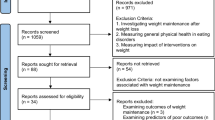Abstract
Purpose
A series of investigations proposed that patients’ preference on minimal invasive and scarless surgery may be influenced by age, sex, and surgical as well as endoscopic history of the individual patient. However, it is unknown which psychological criteria lead to the acceptance of increased personal surgical risk or increased personal expenses in patients demanding scarless operations. We investigated whether individual body image contributes to the patient’s readiness to assume higher risk in favor of potentially increased cosmesis.
Materials and methods
We conducted a nonrandomized survey among 63 consecutive surgical patients after receiving surgery. Individual body image perception was assessed postoperatively applying the FKB-20 questionnaire extended by four additional items. The FKB-20 questionnaire is a validated tool for measuring body image disturbances resulting in a two-dimensional score with negative body image (NBI) and vital body dynamics (VBD) being the two resulting scores. A subgroup analysis was performed according to the conducted operations: conventional open surgery = group 1, traditional laparoscopic surgery = group 2, and no scar surgery = group 3.
Results
There was a significant correlation between a negative body image and the preference for scar sparing and scarless surgery indicated by a significantly increased acceptance of surgical risks and the willingness to spend additional money for receiving scarless surgery (r = 0.333; p = 0.0227). Allocated to operation subgroups, 17 of 63 patients belonged to group 1 (OS), 29 to group 2 (minimally invasive surgery), and 17 patients to group 3 (no scar). Although age and sex were unequally distributed, the groups were homogenous regarding body mass index and body image (NBI). Subgroup analysis revealed that postoperative desire for scar sparing approaches was most frequently expressed by patients who received no scar operations.
Conclusions
Patients with an NBI tend towards scarless surgery and are willing to accept increased operative risk and to spend additional money for improved postoperative cosmesis.






Similar content being viewed by others
References
Kalloo AN, Singh VK, Jagannath SB, Niiyama H, Hill SL, Vaughn CA, Magee CA, Kantsevoy SV (2004) Flexible transgastric peritoneoscopy: a novel approach to diagnostic and therapeutic interventions in the peritoneal cavity. Gastrointest Endosc 60:114–117
Rao GV, Reddy N (2006) Transgastric appendectomy in humans. Oral presentation at Society of American Gastrointestinal and Endoscopic Surgeons (SAGES) Conference in Dallas, Texas, 26–29 April 2006
Hochberger J, Lamadé W (2005) Transgastric surgery in the abdomen: the dawn of a new era? Gastrointest Endosc 62:293–296
Lamadé W, Hochberger J (2006) Transgastric surgery: avoiding pitfalls in the development of a new technique. Gastrointest Endosc 63:693–697
Volckmann ET, Hungness ES, Soper NJ, Swanstrom LL (2009) Surgeon perceptions of natural orifice translumenal endoscopic surgery (NOTES). J Gastrointest Surg 13:1401–1410
Song S, Itawi EA, Saber AA (2009) Natural orifice translumenal endoscopic surgery (NOTES). J Invest Surg 22:214–217
Peterson CY, Ramamoorthy S, Andrews B, Horgan S, Talamini M, Chock A (2009) Women's positive perception of transvaginal NOTES surgery. Surg Endosc 23:1770–1774
Swanstrom LL, Volckmann E, Hungness E, Soper NJ (2009) Patient attitudes and expectations regarding natural orifice translumenal endoscopic surgery. Surg Endosc 23:1519–1525
Hagen ME, Wagner OJ, Christen D, Morel P (2008) Cosmetic issues of abdominal surgery: results of an enquiry into possible grounds for a natural orifice transluminal endoscopic surgery (NOTES) approach. Endoscopy 40:581–583
Clement U, Löwe B (1996) Validation of the FKB-20 as scale for the detection of body image distortions in psychosomatic patients. Psychother Psychosom Med Psychol 46:254–259
Canda AE, Sucullu I, Ozsoy Y, Filiz AI, Kurt Y, Demirbas S, Inan I (2009) Hospital experience, body image, and cosmesis after laparoscopic or open splenectomy. Surg Laparosc Endosc Percutan Tech 19:479–483
Lamadé W, Hochberger J, Ulmer C, Matthes K, Thon KP (2010) Triluminal hybrid NOS as a novel approach for colonic resection with colorectal anastomosis. Surg Innov 17:28–35
Lamadé W, Ulmer C, Friedrich C, Thon KP (2010) Trilumenal hybrid-NOS proctocolectomy. Surg Innov 17:164–169
Varadarajulu S, Drelichman ER (2009) Natural orifice transluminal endoscopic surgery: breaching the boundaries safely. Gastrointest Endosc 69:115–116
Mansard MJ, Reddy DN, Rao GV (2009) NOTES: a review. Trop Gastroenterol 30:5–10
Salinas G, Saavedra L, Agurto H, Quispe R, Ramírez E, Grande J, Tamayo J, Sánchez V, Málaga D, Marks JM (2010) Early experience in human hybrid transgastric and transvaginal endoscopic cholecystectomy. Surg Endosc 24(5):1092–1098
Ibrahim S, Hean TK, Ho LS, Ravintharan T, Chye TN, Chee CH (2006) Risk factors for conversion to open surgery in patients undergoing laparoscopic cholecystectomy. World J Surg 30:1698–1704
Simopoulos C, Botaitis S, Polychronidis A, Tripsianis G, Karayiannakis AJ (2005) Risk factors for conversion of laparoscopic cholecystectomy to open cholecystectomy. Surg Endosc 19:905–909
Acknowledgment
We thank Stefan Winter for his support with the statistical analyses.
Conflicts of interest
None.
Author information
Authors and Affiliations
Corresponding author
Additional information
Permissions
No content comprised in this manuscript is copyrighted by others. All materials used originate from the authors.
Rights and permissions
About this article
Cite this article
Lamadé, W., Friedrich, C., Ulmer, C. et al. Impact of body image on patients’ attitude towards conventional, minimal invasive, and natural orifice surgery. Langenbecks Arch Surg 396, 331–336 (2011). https://doi.org/10.1007/s00423-010-0669-3
Received:
Accepted:
Published:
Issue Date:
DOI: https://doi.org/10.1007/s00423-010-0669-3




